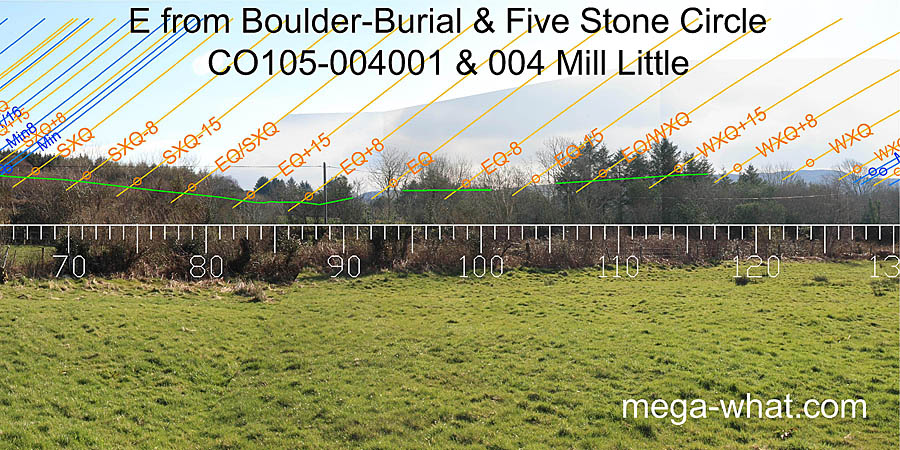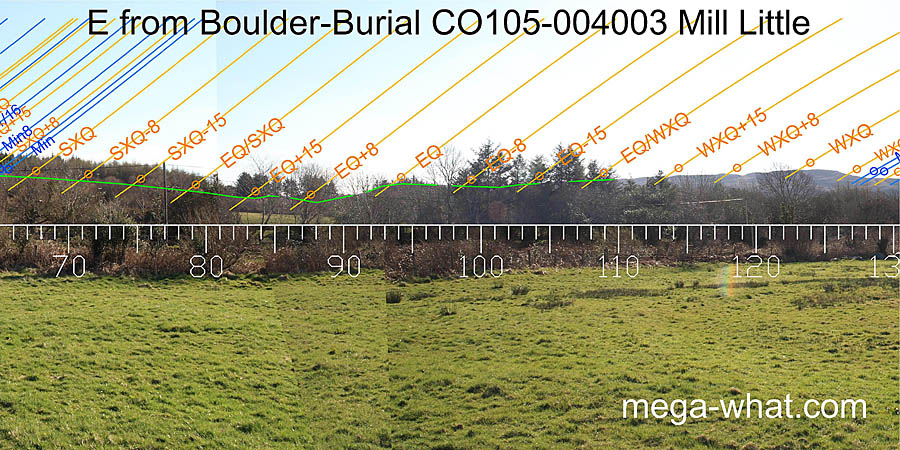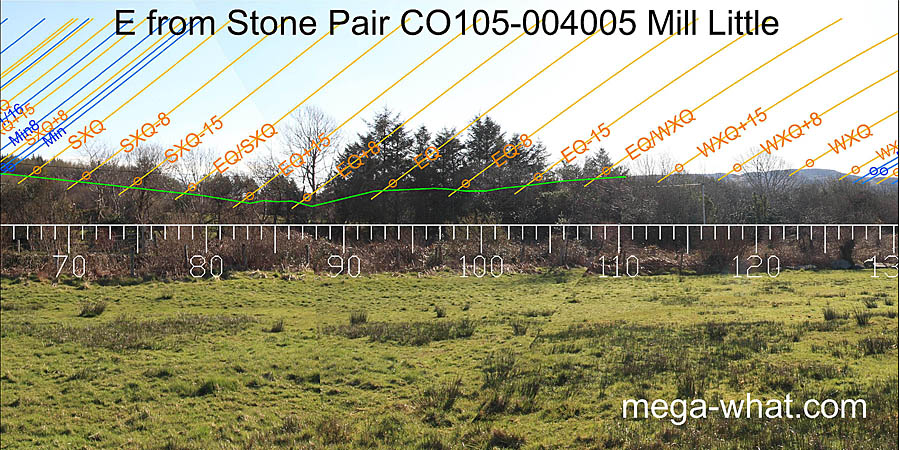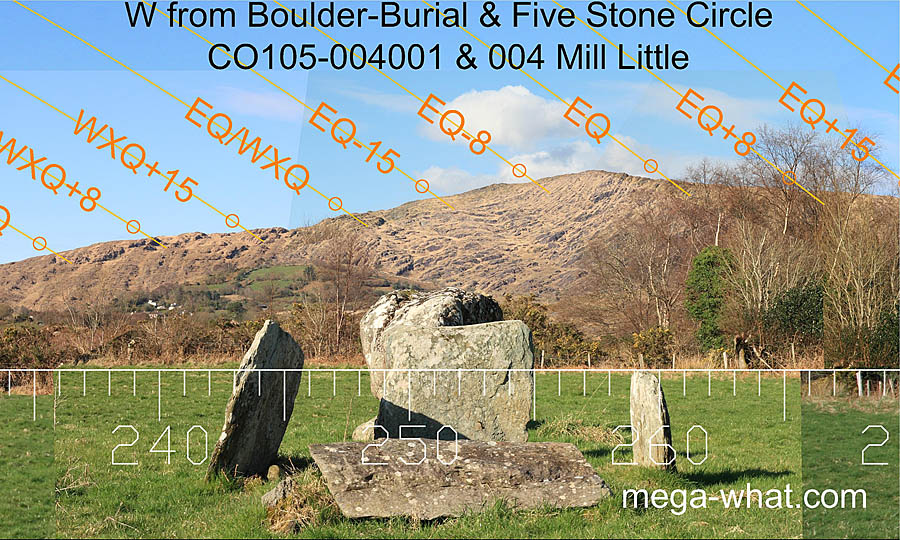
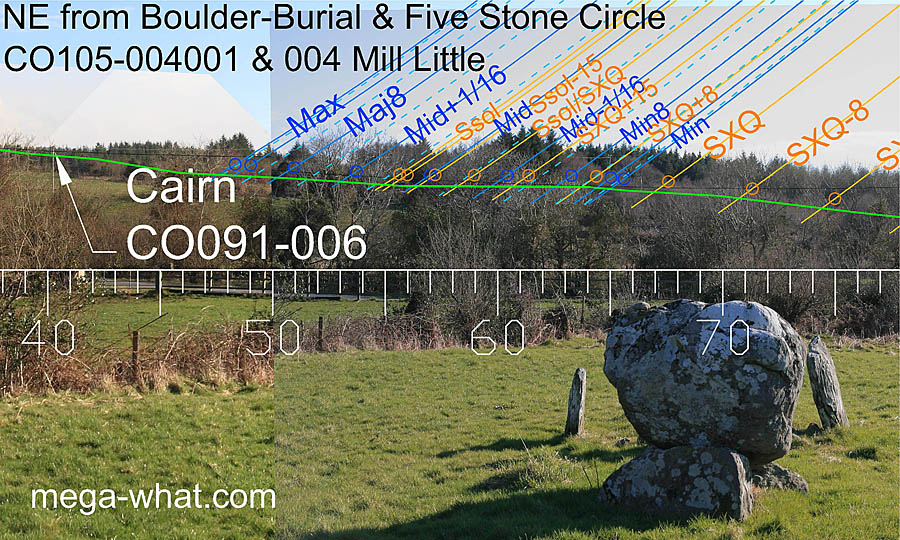 Boulder-Burial one is probably the primary site. Its main thrust indicates horizon that is about a half-month south of the equinox.
In the other direction it is more towards the summer cross-quarter, perhaps somewhat south of it.
Boulder-Burial one is probably the primary site. Its main thrust indicates horizon that is about a half-month south of the equinox.
In the other direction it is more towards the summer cross-quarter, perhaps somewhat south of it.
The south most boulder's capstone is displaced from its supports and the central one is unsurveyed; so there are no axial views from them.
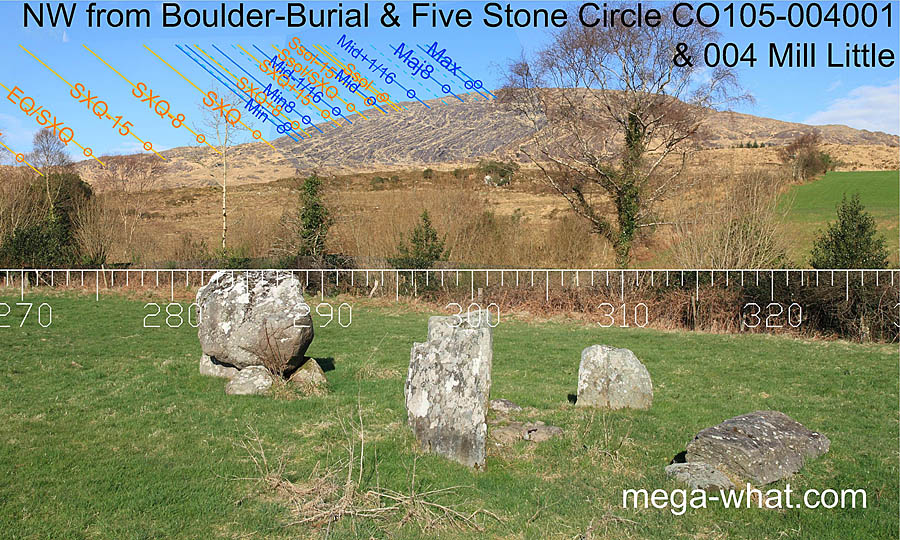 The five stone circle is probably the most recent monument as it does not have its own place, rather it shares with the main boulder.
Its axis is basically the same as well but see how the south side-stone and the axial stone align to indicate major
standstillLunistice positions vary cyclically over an 18.6 year period but are fairly static for more than a year at either end of the range
in the north-west.
The five stone circle is probably the most recent monument as it does not have its own place, rather it shares with the main boulder.
Its axis is basically the same as well but see how the south side-stone and the axial stone align to indicate major
standstillLunistice positions vary cyclically over an 18.6 year period but are fairly static for more than a year at either end of the range
in the north-west.
The radially set portal stone are broken stumps and the alien slab lying over them has presumably been placed as a visible warning to anyone mowing the field.
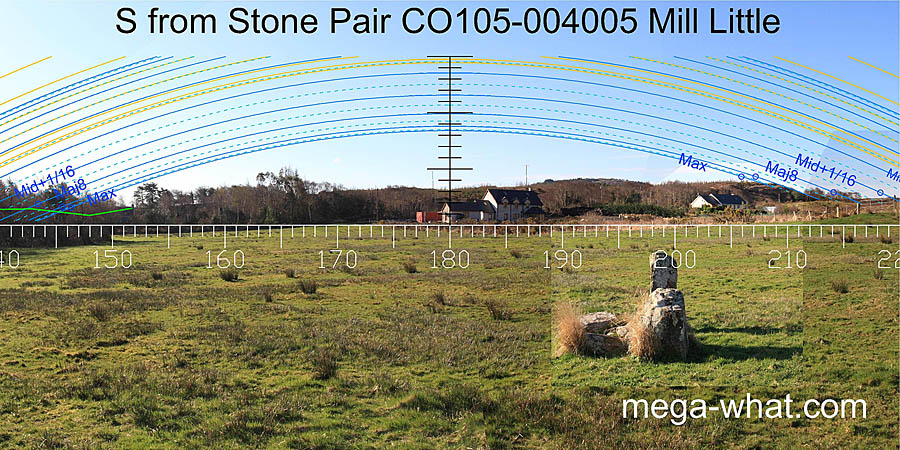
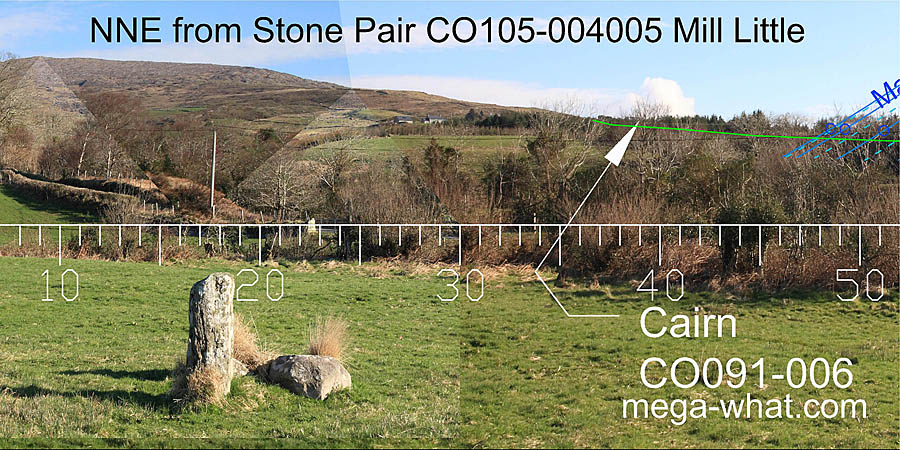 The site of the stone pair offers the advantage of high precision around southerly major standstillLunistice positions vary cyclically over an 18.6 year period but are fairly static for more than a year at either end of the range
moonsets and due south itself is exactly in the bottom of the dip. The pair's axis is about 19° clockwise of due north-south.
Quite a few stone pairs have similar axes; somewhere between north-south and north-east / south-west major
standstillsLunistice positions vary cyclically over an 18.6 year period but are fairly static for more than a year at either end of the range.
The site of the stone pair offers the advantage of high precision around southerly major standstillLunistice positions vary cyclically over an 18.6 year period but are fairly static for more than a year at either end of the range
moonsets and due south itself is exactly in the bottom of the dip. The pair's axis is about 19° clockwise of due north-south.
Quite a few stone pairs have similar axes; somewhere between north-south and north-east / south-west major
standstillsLunistice positions vary cyclically over an 18.6 year period but are fairly static for more than a year at either end of the range.
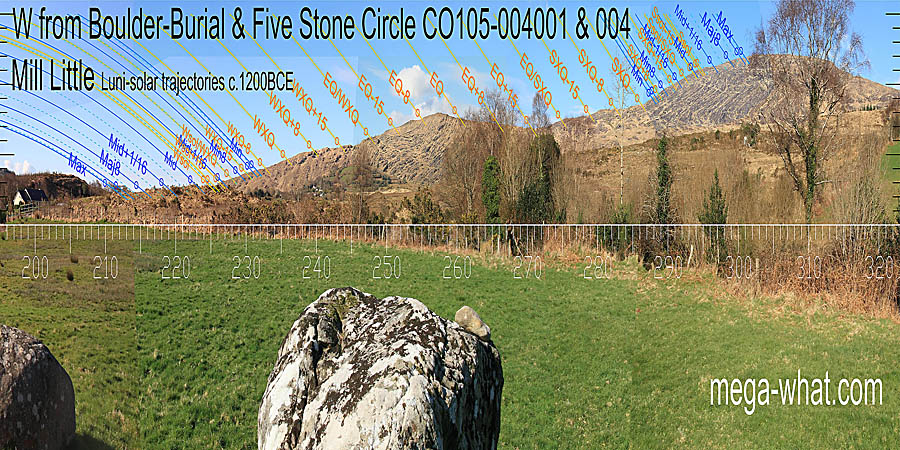
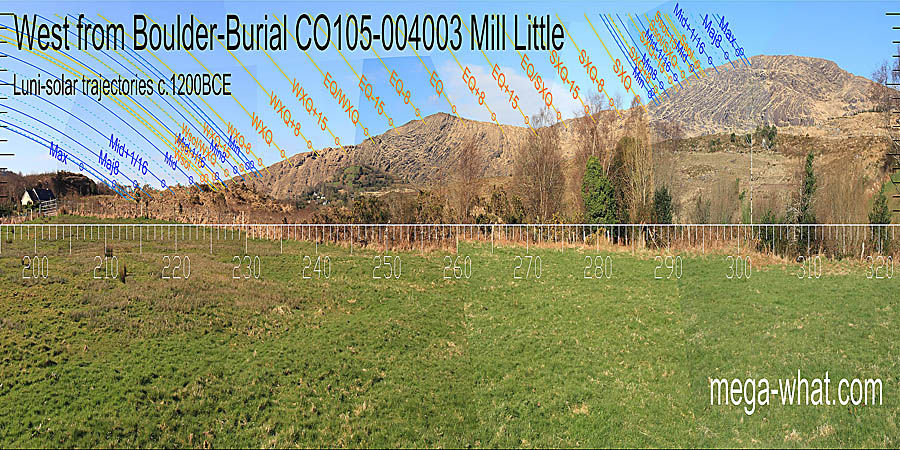
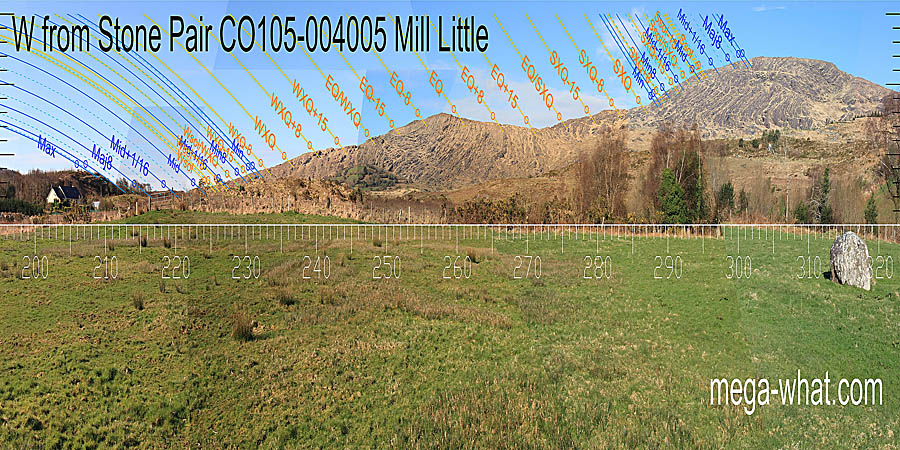 Westwards, the most obvious differences between the sites are to the south-west but the northern boulder-burial has the most precise relationship with sunsets of the summer cross-quarters.
Westwards, the most obvious differences between the sites are to the south-west but the northern boulder-burial has the most precise relationship with sunsets of the summer cross-quarters.
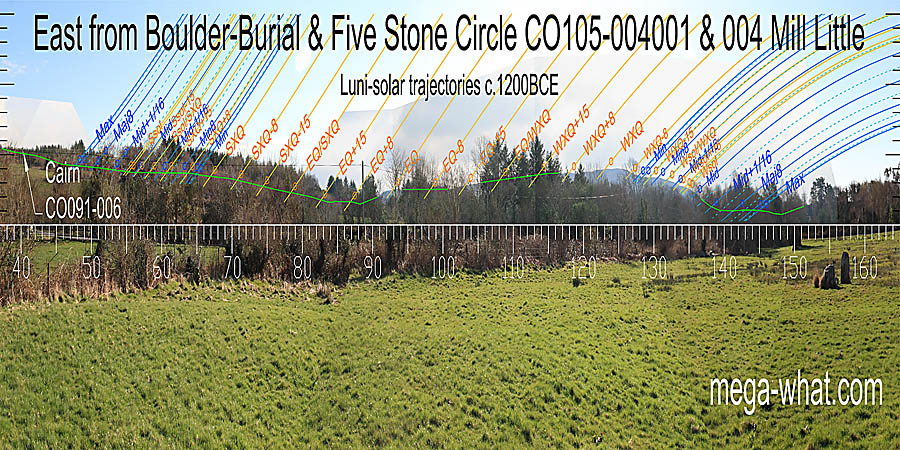
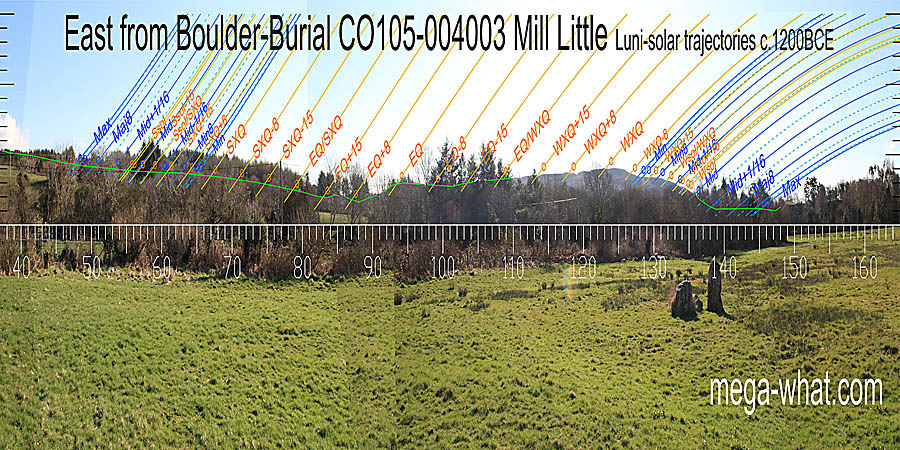
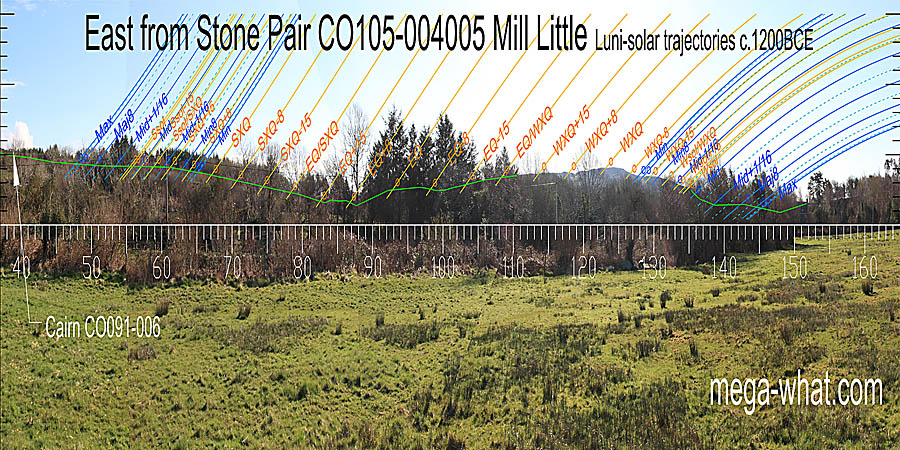 The east is largely obscured by trees but there is obviously an approximately central dip that is somewhat north of the equinox.
The east is largely obscured by trees but there is obviously an approximately central dip that is somewhat north of the equinox.
For further clarification see Farranfada Standing Stone.
More detail about these monuments and their relationships with the four lunisticeLunistices are the most northerly and southerly moons of the month. The lunar equivalent of solstices - more. zones may be found on the Mill Little main page.
References
The national site number is CO105-004 but the final digits indicating a specific monument are 01 etc in the printed inventory, 001 etc in the online database.
- Archaeological Survey of Ireland, record details. www.archaeology.ie/archaeological-survey-ireland
- Ó'NUALLÁIN, SEÁN 1975 The Stone Circle Complex of Cork and Kerry. Journal of the Royal Society of Antiquaries of Ireland 105:83-131, no.82.
- Ó'NUALLÁIN, SEÁN 1978 Boulder-Burials. Proceedings of the Royal Irish Academy 78c:75-114, p87, no.11.
- Ó'NUALLÁIN, SEÁN 1984 A Survey of Stone Circles in Cork and Kerry. Proceedings of the Royal Irish Academy 84c:1-77, p40, no.80.
- Ó'NUALLÁIN, SEÁN 1988 Stone Rows in the South of Ireland. Proceedings of the Royal Irish Academy 88c:179-256, p246, no.118.
- POWER, D. et al. 1992 Archaeological Inventory of County Cork, Volume 1: West Cork. Dublin: Stationary Office. p33:no.81, p25:no.129, p44:no.198.

